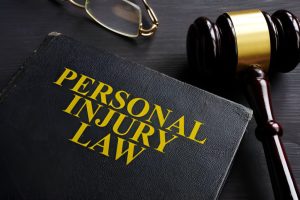Welcome to the basic guide for personal injury laws. In this comprehensive article, we will take the complexities of personal injuries laws, and cover everything from their purpose to different types of cases, the steps that must be taken after excessive personal injury, and the common myths surrounding these laws. In a car accident, or suffering from medical misconduct, or suffering from a slip and fall, understanding your rights and legal procedures is very important. We will provide you with valuable visions and practical advice to navigate the complications of personal injuries laws. Therefore, let’s start exploring this crucial aspect of the legal system.

What Are the Personal Injury Laws?
The main purpose of the personal injuries laws is to ensure that individuals obtain a fair representation and asylum in cases where negligence, error or responsibility leads to an injury, and to provide a legal framework to follow up the demands of injury and the search for appropriate advice and support. Legal responsibilities for individuals and entities to support safety standards and take appropriate precautions to prevent harm to others.
They also determine the obligations of insurance companies and other parties to compensate the affected party for their losses. Completely.
What Are the Different Types of Personal Injury Cases?
The main purpose of the personal injuries laws is to ensure that individuals obtain a fair representation and asylum in cases where negligence, error or responsibility leads to an injury, and to provide a legal framework to follow up the demands of injury and the search for appropriate advice and support.
Legal responsibilities for individuals and entities to support safety standards and take appropriate precautions to prevent harm to others.
They also determine the obligations of insurance companies and other parties to compensate the affected party for their losses. Completely.
What Are the Different Types of Personal Injury Cases?
Personal injury laws encompass various types of cases, including:
- Medical malpractice
- Car accidents
- Workplace accidents
- Product liability
- Slip and fall incidents
Each includes seeking to achieve compensation and legal protection for affected individuals. This diverse range of personal injury cases can significantly affect the lives of individuals, which leads to physical, emotional and financial difficulties.
This caused harm to patients. Accidents in the workplace include injuries to the job, often due to unsafe working conditions. The productivity of the product is caused by defective products that cause harm to consumers. In each scenario, individuals are looking for fair compensation for their injuries and legal protection to ensure the provision of justice.
Car Accidents:
Car accidents are a typical occurrence in personal injuries, require complex legal processes, insurance demands, and the collection of evidence to deal with negligence and responsibility.
In these cases, the legal system begins to collect evidence to prove error and accountability. This may include obtaining police reports and witnesses and documenting the scene of the accident. It is necessary for individuals involved in car accidents to request legal guidance to move in the complexities of personal injury claims.
Insurance claims are essential for obtaining reimbursement for lost income, medical costs, and property damage. To guarantee a reasonable and just settlement, it is essential to comprehend the subtleties of insurance policies and legislation.
Workplace Accidents:
The incidents of the workplace fall under the scope of the laws of personal injuries, which requires considerations of responsibility, damage, the need for legal advice and representation to ensure the appropriate asylum for the affected individuals.
Complex legal requires expert guidance to move through the complexities of the laws compensation and potential neglect demands.
It is important to evaluate the damage caused, including medical bills, lost wages, pain and suffering, in order to determine the appropriate compensation. A skilled lawyer can help you develop a strong case, represent the interests of the affected party, and negotiate fair settlements, while emphasizing the need for a request for legal guidance early in this process.
Medical Malpractice:
Medical misconduct is one of the decisive bodies of personal injuries, which includes the pursuit of pain and suffering settlements, the movement of legal operations, and the commitment to the law of restrictions to search for legal recovery.
Surgical errors, wrong diagnosis, drug errors, or incomplete patient care. Patients who have suffered due to medical negligence may seek compensation to cover medical expenses, lost wages and emotional distress.
It is important for individuals to be aware of the statute of limitations, which dictates the time frame through which they can submit a claim for their injuries.
Product Liability:
The issues of the responsibility of the product constitute an important component of personal injuries, often leading to lawsuits, seeking to achieve damage, and the need to provide convincing evidence in the legal process to prove responsibility and search for appropriate treatments.
A defective product, has the right to request compensation through a lawsuit on the responsibility of the product. In such cases, proof of neglect or the failure of the product in meeting safety standards becomes very important.
Evidence collection, such as medical reports, eyewitness certificates, and product defect analysis, are vital to strengthening the issue. In moving in these complications.
Slip and Fall Accidents:
Slipping and falling accidents constitute a basic category within the laws of personal injuries, including compensation considerations, assessment of responsibility and legal processes, and the determination of neglect to treat the resulting injuries.
And calculating fair compensation. These cases require a comprehensive understanding of the legal framework, as well as the ability to collect evidence and provide it effectively.
Mobility in legal operations in the cases of slipping and autumn requires an in -depth knowledge of the relevant laws and procedures, which makes legal representation unable to secure fair results.
What Are the Steps to Take After Sustaining a Personal Injury?
After a personal injury, it is important to ask for medical attention immediately, collect relevant evidence, start the insurance demand process, adhere to legal requirements and the law of restrictions of following legal asylum.
It is extremely important in setting the basis for your recovery and possible legal procedures. Seeking timely medical attention not only ensures your safety, but also creates a record of injury.
The start of the demand for insurance immediately can accelerate the payment procedures. Possible obstacles can be avoided in the pursuit of legal shelter by realizing the system of restrictions and legal requirements.
Seek Medical Attention:
The search for immediate medical care after a personality injury is very important, not only to address medical expenses, but also to demonstrate decisive evidence related to the accident and assess the potential negligence involved, and it often requires legal assistance to subsequent procedures.
This rapid doctor is necessary because it makes it possible to properly document and extent, which is very important to insurance complaints and any future legal procedures. After injury, the postponement of medical care can exacerbate the condition and lead to complications, which provokes medical expenses. In cases of physical injuries, the search for medical attention properly once the initiative appears, while highlighting the seriousness of the damage and strengthening any claim of neglect.
Gather Evidence:
Comprehensive and collecting concrete evidence is extremely important in personal loss, which affects insurance claims, legal processes and neglect, which requires accurate interest in details and adherence to legal requirements.
And prove photography to show the boundary of injuries and circumstances around the accident.
Experts’ opinions and evaluations may be needed to prove the effect of the injury on the victim’s life and future diagnosis.
This evidence plays a vital role in proving the error and showing the severity of the injury when negotiating with insurance companies or providing the case before the judge or the jury.
File a Claim:
Completely fileing a fully insurance claim is an important step in obtaining compensation for individual injuries, as it requires following accurate legal rules and often depends on the assistance and representation of legal experts to manage complex regulations.





